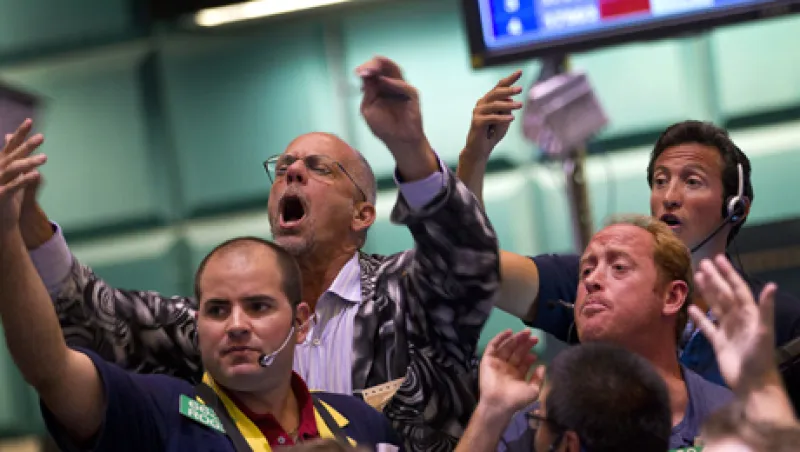It is no secret hedge funds have been using exchange-traded funds (ETFs) to make directional bets on a broad market index or a specific industry group. They frequently buy "call" options or hedge with "put" options. Sometimes they hedge by shorting the funds outright.
This said, one of the interesting unnoticed themes to emerge from the recent wave of quarterly 13F filings, which take a snapshot of the portfolios of equity investors on the final day of the first quarter, are the number of high-profile hedge fund managers who took new put option bets to hedge their exposure.
In many cases, these are hedge funds that don’t typically have a history of investing in ETFs.
This hedging strategy so far has proved to be a prudent move, given that the stock market has sagged since its strong, double-digit first-quarter surge.
At the end of the first quarter, activist investor Trian Fund Management held puts on an ETF that tracks the direction of the S&P 500. It did not hold this position at the end of the prior quarter.
Tudor Investment Corp., headed by macro legend Paul Tudor Jones II, reported holding puts on at least four different ETFs at the end of the March quarter covering the following indexes — S&P 500, Russell 2000, Nasdaq 100 and gold.
What is especially interesting is that Tudor had no puts on ETFs at the end of the fourth quarter. There is no way of knowing which, if any, of these positions were taken by Tudor BVI, the fund Jones himself oversees.
At the end of the first quarter, two other large hedge funds held puts on iShares ETFs that track the Russell 2000 — New York City–based Perry Capital and Boston-based Highfields Capital Management. Neither of them held this position at the end of the prior quarter.
Highfields’ put position was especially large, ranking among the firm’s top five holdings in its $9 billion-plus equity portfolio. At the same time, it held long positions in the Russell 2000 Growth fund and Russell Midcap fund.
In the fourth quarter, Perry Capital’s only ETF position were puts on iShares ETFs that track the performance of the MSCI Emerging Markets index.
Louis Bacon’s Moore Capital Management has been an aggressive user of ETFs for a number of years. In fact, they partly account for Moore’s more than doubling of its equity assets in general in the first quarter, to $6.3 billion — a lot for a macro manager not generally known for its stock investing.
And puts accounted for about half of Moore’s roughly two dozen ETF positions. They include bets on declines in the S&P 500, high-yield bonds, China, homebuilders, industrials, oil, consumer discretionary stocks, materials and financials.
Another recent user of puts on ETFs is Stephen Mandel Jr.’s Lone Pine Capital. However, he has tried to do it as stealthily as possible, taking advantage of a provision that allows investors to file delayed amendments to their 13F filing. For example, on May 4 he filed an amendment to his third quarter 2011 report — originally due by November 15 — containing two additional holdings: puts on the SPDR 500, which tracks the movement of the S&P 500, and an ETF that tracks the volatility of the S&P 500.
Also on May 4, he amended his fourth quarter 2011 report to include the same ETF that tracks the volatility of the S&P 500, albeit a smaller position than he held at the end of the third quarter. Both amended reports were filed on the same day, nearly five months after the third quarter report was due and nearly three months after the December report was due.
Little surprise, Lone Pine’s 13F covering the first quarter of 2011 does not contain any puts on ETFs. However, if history is any indication, we can expect an amended report in the future containing some sort of put position for the period.







